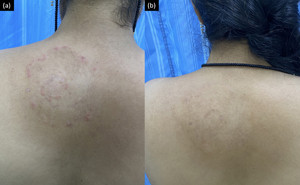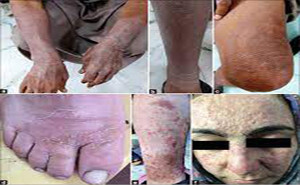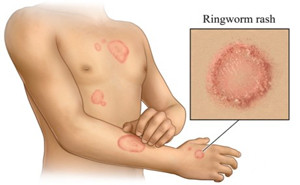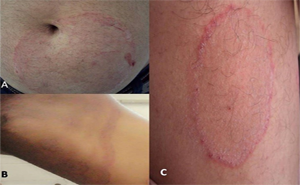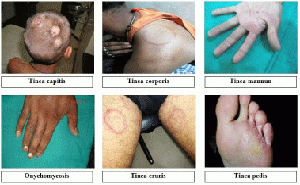Featured
Due to the changing face of
dermatophytosis in India, many dermatologists practice different dosing
patterns of itraconazole (ITZ). Recently, a new form of ITZ, super-bioavailable
ITZ (SBITZ), has been commercialized to overcome the pharmacokinetic challenges
of conventional ITZ (CITZ). ITZ is a weak base lipophilic
molecule with a limite...
The prevalence of superficial
fungal infections across the globe is increasing from 20-25%. Superficial
infections are mostly caused by dermatophytes. Depending on the site affected,
the dermatophytes are clinically classified as Tinea capitis (head), Tinea
faciei (face), Tinea barbae (beard), Tinea manus (hand), Tinea corporis (body),
Tinea c...
There has been a significant
increase in the incidence of chronic, relapsing, recurrent cases of superficial
dermatophytosis in India that are also often unresponsive to conventional drugs
and doses of recommended antifungal treatment. Almost 15– 20% of the outpatient
department cases are those of chronic dermatophytosis. Recurrences and relaps...
Infection and Drug Resistance Journal:Tinea is superficial fungal infections typically caused by
dermatophytes.Superficial fungal infections are widespread, with an
estimated worldwide prevalence of 20%–25%, and include tinea pedis (athlete’s
foot), tinea cruris (jock itch), and tinea corporis (ringworm), among othersTopical allylamine (terbinaf...
International Journal of Scientific Study (IJSS): May, 2020Superficial fungal infections are
caused by dermatophytes, non-dermatophytic molds, and commensal yeasts. According to published literature, the global prevalence rate of superficial
mycotic infection has been found to be 20–25%. The recent prevalence of
dermatophytosis in India ranges f...
The British Journal of DermatologyDermatophytic infections have
undergone unprecedented changes in India in the recent past. Oral antifungal drugs are
considered to have a high cure rate in tinea corporis, tinea cruris and tinea
faciei.Clinical trials to find out the
effectiveness of the four main oral antifungal drugs are lacking.Authors teste...
Superficial fungal infections are primarily caused by
dermatophytes, Candida spp, and Malassezia species affects 20%–25% of the
world’s population.The lesion of dermatophytosis is present with an annular or
ring-shaped red scaly plaque with central clearing, often associated with
severe pruritus.Systemic or topical antifungal drugs are used as...
Clinicians should be more judicious in prescribing or
recommending oral or topical antifungal therapy.Given the limited selection of antifungals, it is paramount
to mitigate resistant cases. Mitigation proposals include:·
good
skin hygiene,· &nb...
International Journal of Research in Dermatology: Published
on February, 2021Dermatophytic infections are the
most prevalent fungal infections, which affect majority of the global
population. Indian climate, especially the hot and humid conditions contribute
majorly to dermatophytosis. Azoles are the most commonly used
antifungal agents due t...
The Journal of Dermatology:Luliconazole Cream, 1% is an azole
antifungal indicated for the topical treatment of interdigital tinea pedis,
tinea cruris, and tinea corporis caused by the organisms Trichophyton rubrum
and Epidermophyton floccosum.TAKE HOME MESSAGES: Authors evaluated the efficacy and
safety of luliconazole cream 1% in the treatmen...
Published on Infection and Drug Resistance Journal:Tinea is superficial fungal infections typically caused by
dermatophytes. Common pathogens include Trichophyton rubrum,
Trichophyton mentagrophytes, and Epidermophyton floccosum. Superficial
fungal infections are widespread, with an estimated worldwide prevalence of
20%–25%, and include tinea p...
